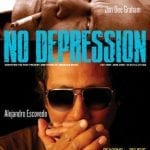Dr. John – Hoodoo Guru
“You live in a jungle, you better be ready to die. Somebody like me may shave your ass dry.”
“Monkey & Baboon,” by Mac Rebennack & George Landry, from Creole Moon
“There is no finer ambassador for New Orleans than Mac. He takes along as much of New Orleans as he can, so wherever he is, New Orleans is there.”
Allen Toussaint
A chic, elite crowd nurses its drinks and keeps focused on the stage at Dimitriou’s Jazz Alley. The balconies, the tables set on the main floor, even the stools jammed against the horseshoe bar at the back of the swank supper club in downtown Seattle, are filled. Waiters in tuxedo vests weave through the room, trays held high. Huge curtains hang from the high ceiling behind the stage, filtering the headlights that pass down Sixth Avenue into a mistily romantic special effect. Everything is as it should be in the moments before the featured act makes its entrance, down to the skull that glows beneath multicolored lights, right on top of the black grand piano.
Down a short corridor, beyond the dressing room door, Mac Rebennack smokes peacefully on one of those miniature cigars he favors these days. Sparky, his road manager, sits nearby, resolving last-minute crises by phone and online, talking and typing at the same time. None of this fazes Rebennack, who goes by the stage name Dr. John; he smiles as his drummer, Herman Ernest III, catches him up on some bit of happy personal news.
For seven months most of the gossip he’s heard has been bad, about friends who were wiped out by Katrina’s descent on the Gulf Coast. Ernest, in fact, lost everything he had when his home in the Ninth Ward, which he’d been fixing up for years, was swept away. Mac’s bass player, David Barard, doesn’t even live in New Orleans anymore; the storm sent him running all the way to Michigan.
That misery seems far away, though, at least in these last minutes before the first set. Mac, wearing red pants and jacket, wide-brim hat crowned with a red feather, a dangling silver earring, and a necklace of gris-gris accouterments, with a dark gray ponytail spilling down his back, looks more like a funky leprechaun than one of the last active links to the golden age of New Orleans R&B. He was, of course, a kid back then, but already savvy from riding with his father, who peddled records and fixed sound systems that had broken down in nightclubs around town.
From those days up to this week of nights at Jazz Alley, a lot of history would play out. There were rough times and triumphs too, much of them tied into the music he would make from his teenage sessions up to his latest release, Mercernary, a selection of songs written by Johnny Mercer due out May 23 on Blue Note. Mac’s performance, and the disc’s punning title, suggest that his hipster essence and distinctive vocal and piano sound have weathered time and trouble.
When he proceeds regally with his Lower 911 Band from their dressing room, and they take their seats on the stage and count off the first tune, and over a loping, second-line groove, Mac croaks the opening line — “I ain’t never seen a milk cow with a saddle on his back before” — and follows it with one down-home double-entendre after another, that same quality is evident to everyone in the room. It’s not just about endurance, though. In his celebration of New Orleans, its neighborhoods reduced to wreckage and its lives left in disarray, triumph asserts itself in sly street rhymes, chanted over Ernest’s thumping, “shave-and-a-haircut” tom-tom riff:
“Who’s this guy in my bed?” “That ain’t nothin’ but the neighbor’s next door baby, lying next to me.” “Well, I been all around this world to the Gulf of Mexico, and I ain’t never seen no six-foot-tall baby before.”
The streets may be blown to ruin, but up here in Seattle, in fact everywhere Dr. John throws it down, New Orleans has moved in and taken over for a while.
This idea of fighting to survive didn’t begin with Katrina. You can go back as far as the 1830s, when Congo Square, at the corner of Rampart and Orleans, filled once each week with Africans, all uprooted from home. They spoke a dozen languages and maybe some fractured English or French. Here, though, music and dance drew them together. Participants brought four-string banjos, violins, and more rustic objects, which they transformed into instruments: jawbones from oxen, horses or mules; gourds filled with pebbles or hard kernels of corn. Tolerated by whites as a way for their slaves to release tension harmlessly, these gatherings in fact planted the idea of music as a way of finding hope among the hopeless.
Drawing as well from European sources, black musicians had, by the late 1890s, created a style of music unknown beyond New Orleans. Recording technology eventually spread the sound of early jazz throughout America, but equally crucial were the journeys of those who played it, up the Mississippi River to Chicago and fanning east to New York and out toward the West.
No one was more critical in this mission than Louis Armstrong. No one played trumpet like him, not with that bravado and soulfulness. Nothing he did followed established rules of virtuosity, yet his command of the instrument was undeniable. He sang too, in guttural growls and with honeyed melisma similarly disconnected to formal notions of excellence, but this didn’t matter either. The rules notwithstanding, this young man was the finest singer of his era.




